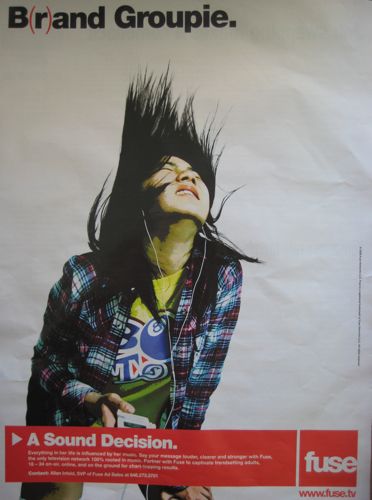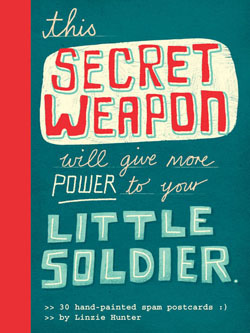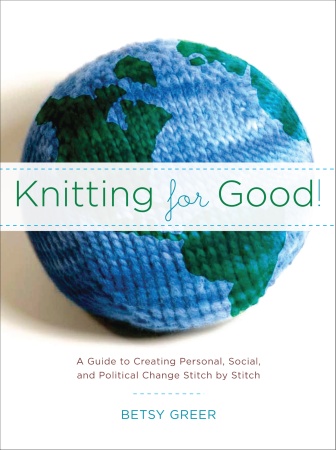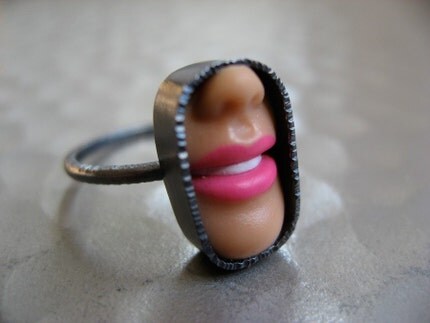“This is a great moment of reckoning for the household economy at all levels of the income stream,” Harvard marketing professor Nancy Koehn told Marketplace recently.
It is true. This is a great time to rethink your consumer habits in a serious way. The present financial crisis is distressing on many levels — but it is also an opportunity, to change the way you shop, to shed bad habits, to forge a different relationship with material culture. I don’t mean simply cutting back for now, bargain-hunting and pinching pennies for a while, and hoping things get “back to normal” next year. I mean it’s an opportunity to make permanent changes. To change the way you consume, forever.
 One of the primary aims of Buying In is to pull back a curtain for consumers on the way the commercial-persuasion industry has really changed in recent years, and on the way that the consumer mind (the human mind) really works, and isn’t going to change. The point of this exercise is to help consumers to make better decisions. The book does not argue against or complain about materialism or branding, per se — rather, it aims to explain the reality of these elements of contemporary life, and thus leave the reader better positioned to make consumer decisions that are productive, and that satisfy.
One of the primary aims of Buying In is to pull back a curtain for consumers on the way the commercial-persuasion industry has really changed in recent years, and on the way that the consumer mind (the human mind) really works, and isn’t going to change. The point of this exercise is to help consumers to make better decisions. The book does not argue against or complain about materialism or branding, per se — rather, it aims to explain the reality of these elements of contemporary life, and thus leave the reader better positioned to make consumer decisions that are productive, and that satisfy.
I am aware, of course, that the book also has an audience in the world of marketing professionals, or at least a certain segment of that world. However, it is with the consumer audience in mind that I have created the Reader’s Guide to Buying In: The Secret Dialogue Between What We Buy and Who We Are. you will find it after the jump.
If you are a participant in a book club, you may know that publishers often create such guides for books that they see as likely candidates for book clubs. This one is partly based on having read other guides (like the one my publisher, Random House, created for Po Bronson’s book Why Do I Love These People?) In addition, it was influenced by the experience of promoting the book — the questions and reactions that came up on call-in radio shows and appearances before audiences, as well as interviews, reviews, and online reactions to the book. It was also shaped by suggestions from Alex J. Mann, a student at Penn State. (Thanks again, Alex!)
Unlike a traditional, publisher-created Reader’s Guide, this one is dynamic: It includes multiple links to additional reading that either amplifies the book’s themes, critiques them, or questions them. From time to time this guide will be changed or updated, as new critiques emerge.
Like a traditional Reader’s Guide, it is intended to spark discussion in a book club or other group setting. As indicated, now seems like a very good time for such discussion. So if you are part of a book club, or know someone who is, consider Buying In — and the guide that follows. Read more
Posted Under:
Buying In (the book)
This post was written by Rob Walker on November 12, 2008
Comments Off on Helping You Change The Way You Shop: The exclusive Buying In book-club reader’s guide
 A few weeks ago I undertook an interesting little experiment that worked out really well: I “visited” a university class on the other side of the country, via Skype (video).
A few weeks ago I undertook an interesting little experiment that worked out really well: I “visited” a university class on the other side of the country, via Skype (video).
And if the circumstances are right, I am willing to do the same for your class, too.
The deal is as follows:
The experiment came about because of a note I got from David Horowitz, who used Buying In in a Consumer Behavior class he’s teaching this semester at Sonoma State University. We had a little exchange, and somewhere along the way he said (paraphrasing): If you’re ever in the area, come visit my class, etc.
This is something I get a lot. But of course it’s extremely rare that I happen to be in the right city at the right time to visit a college/university class — which is a shame, because I always enjoy such meetings and discussions when they do come about.
Anyway, so I’d been thinking about this very dilemma for a while and offered to visit the class … via Skype. Dr. Horowitz was game, and his classroom had the necessary technical specs: a WiFi connection, and video projector hooked up to his laptop. Not unusual for the contemporary college or university classroom these days, I believe.
So we picked the day, and I turned set Skype’s video preference to “on,” called in, and spent about a half an hour chatting with and taking questions from his class, of about 30 or 40 students I guess.
It was pretty cool!
In fact I consider the experiment successful enough that I’m willing to do it again. Thus this announcement: If you teach a class and use Buying In as part of it — I don’t care if it’s consumer behavior, marketing, design, cultural studies, whatever — I would be happy to do the same thing for you.
Obviously there are some scheduling constraints; I can’t do it every day. But if you’re interested, now or for some future semester, please drop me a line at murketing@robwalker.net (subject heading “class visit” or somesuch) and let me know. We’ll work something out.
(Also obviously: If you’re a student who thinks this is a good idea, simply bring it to your prof’s attention.)
Finally, I’d like the offer public thanks here to David Horowitz, and his students, for playing along with this experiment. Hope you all enjoyed it, too.

[The Product Is You is an occasional Murketing series collecting advertising that is aimed at advertisers: Magazines or television networks packaging up their consumers — that is, you, the potential ad target — in ways designed to attract advertisers. Previous installments here.]
Here, in an from a trade journal, some insight into how Fuse, a cable music channel, thinks about its viewers. Regarding this “brand groupie,” we learn that: “Everything in her life is influenced by her music.” Thus, Fuse is the place to influence her — to “captivate trendsetting adults, 18-34.”

Back in August, I did a Consumed about KAWS, noting that having established himself as a successful artist, he was starting to get, somewhat belatedly, actual gallery shows. One of those shows opened on November 6, and runs through December 23, at Gering & López Gallery in NYC. More info here.
Posted Under:
Artists,
Update
This post was written by Rob Walker on November 10, 2008
Comments Off on To Do in NYC: KAWS
 SOCIAL CURRENCY
SOCIAL CURRENCY
Prepaid cards that cash in on the status of plastic
This week in Consumed:
While recent months have found millions of Americans nervously eyeing their mutual-fund holdings, money-market accounts and credit-card bills, millions of other Americans continue to live their financial lives completely outside this system. Figures vary, but by one widely cited estimate 10 million American households have no bank account. And plenty of businesses sell financial alternatives to the “unbanked” — check-cashing places, for instance. In recent years, another alternative has emerged: instead of converting a paycheck into cash, prepaid cards let users pour it into a piece of branded plastic. Aside from competing on the basis of price (check-cashing fees can be brutal) and convenience (a prepaid card can be used to pay a utility bill online, for instance), at least some of this plastic purports to offer something less quantifiable.
Consider, for instance, the Prepaid Visa RushCard, the product of a partnership between Unifund (a Cincinnati company best known for buying up and collecting on bad debts) and Russell Simmons, a founder of Def Jam records and the Phat Farm apparel brand.
Read the whole column in the November 9, 2008, issue of The New York Times Magazine, or here.
Consumed archive is here, and FAQ is here. Consumed Facebook page is here.
To make a point about Consumed that you think readers of The Times Magazine would be interested in: “Letters should be addressed to Letters to the Editor, Magazine, The New York Times, 620 Eighth Avenue, 6th Floor, New York, N.Y. 10018. The e-mail address is magazine@nytimes.com. All letters should include the writer’s name, address and daytime telephone number. We are unable to acknowledge or return unpublished letters. Letters may be edited for length and clarity.”
Honestly I’m too busy to say this well, but just a quick word or two about a recent Wall Street Journal story about improved sales of private-label products as proof that “frugality trumps branding.” (Mentioned also here and here.)
First, private-label sales have been rising steadily for many years. This is not a break with recent trends, it’s a continuation of it.
Second, while many people still describe private-label products as “generics,” the fact is that the broadest trend in the private-label business has been to make such products more brand-like. I get the feeling that some of the people who write about this think you can still walk into a store and find the kinds of totally brand-free generic products, like cereal boxes marked simply Corn Flakes, available in the 1970s (and preserved forever in Repo Man). Obviously, you can’t. Moreover, the familiar tactic of crafting packaging that simply apes brand-name goods, but clearly bears the name of whatever store is selling the stuff, has increasingly been supplanted by strategies that seek to position private-label goods as brands.
It happens that I’ve dealt with this subject in various ways in Consumed:
- In a 2004 column about Ol Roy, a Wal-Mart private-label product that is the nation’s top-selling brand of dog food
- a 2005 column about private-label products at Wegmans, which are actually invented by that chain, and don’t knock off any brand-name product at all;
- a 2006 column about the package-design strategy for private-label goods at Publix, which quite intentionally pop from the shelf as something much more like a unique stand-alone brand than an echo of traditional branded merch;
- and, finally, a 2008 column about Safeway’s O Organics private-label brand, which the chain has actually supported with traditional advertising, and is selling in venues other than Safeway. (Target has also supported some of its private-label goods, such as the Choxie line, with traditional advertising.)
What unites all of these things is that they’re all very much branded goods. They were simply branded by a retailer, not a manufacturer.
Are they cheaper than manufacturer-branded goods? Often. And yes, that’s partly because, in general (I’ve just noted some exceptions) the brand-building isn’t done by way of traditional advertising, which can be expensive. But they’re also cheaper because there’s no middleman: Stores are dealing directly with production facilities to get this stuff made.
So, sure, private-label goods are probably doing great because more people are being “frugal,” but it’s not just about competing on price alone, or about improvements to the quality of private-label goods. I am certain that the profit margins work out quite nicely for the retailers — and much better than they did back in the days of “generic” goods — precisely because private-label goods today increasingly include something very much like a brand premium.

Out any minute now: Linzie Hunter‘s Secret Weapon postcard book: “30 Hand-Painted Spam Postcards.” You no doubt read about Linzie Hunter in this Consumed. The book is supercool.

Also coming soon: Betsy Greer’s Knitting For Good. I just got this in the mail and it looks cool, too, though I have not yet read it. Possibly you read a bit about Betsy Greer in Buying In.

And now in its third (!) printing, according to an email blast I received yestersday, there’s the book version of Handmade Nation. I haven’t yet gotten hold of this, but I hear nothing but good about it. And Faythe Levine is, of course, also in Buying In.
In an interview with Fortune, a Wal-Mart honcho talking about the holiday season says in passing:
Bikes are going to be big. Electric bikes are something that we’re having a hard time keeping in stock at Wal-Mart.
I poked around a (very little) bit and wasn’t able to immediately come up with any echo of this. I’m curious about it in part because electric bikes and Wal-Mart shoppers aren’t two concepts I would have matched up intuitively. I’m not sure what to make of it.
I added a plug-in that puts recent comments, or the start of them, in the sidebar. It’s below the ever-rotating Delicious linkpile box. It says, “Comments.” You can’t miss it.
I thought this might be interesting for people coming to the site for the first time. Suggestions for improvements to that, or to anything else on Murketing.com, are always welcome.
Thank you and good night.
Posted Under:
Murketing.com
This post was written by Rob Walker on November 5, 2008
Comments Off on Very minor site note
As a footnote to the other day’s post, and to the election, The Wealth Report notes that Obama “won 52% of the votes of those earning $200,000 or more. That compares with Sen. John McCain’s 46% showing for the same group.”
Why? Wealth Report offers three possibilities, truncated here (see the whole post for details):
First, the wealthy, like many voters, may have placed a higher emphasis on the state of the nation than the state of their wallets. …
Another possibility is that the wealthy don’t believe Sen. Obama will go through with his tax increase — at least not right away…
Finally (and perhaps least likely), the wealthy may be responding to Sen. Joe Biden’s argument that paying higher taxes is patriotic….
Country first!

Small Smile Ring, via Etsy.
Update: Coolhunting has a post about the designer who made the above ring, here.
From Robert J. Samuelson’s Newsweek cover story:
The bad news is that recovery, though boosting employment, may prove unsatisfying. Our new economic era may lapse into a state of “affluent deprivation.” That’s an unfamiliar term. It doesn’t mean poverty. The United States will remain a wealthy society. Rather, “affluent deprivation” signifies a state of mind. People feel poorer, because their sluggish income gains get siphoned off into higher taxes, energy costs and health spending. Though these all involve benefits, they don’t pay everyday bills or cover people’s routine pleasures. There’s an approaching collision between private and public wants—government spending for everything from retirement benefits to defense to the repair of roads and bridges.
To some observers, we are so materialistic that we can easily make sacrifices. Do we really need fancier grills or more flat-screen TVs? Of course, there’s waste and personal extravagance. But what this argument ignores is psychology. “Luxuries” quickly become “necessities”—cell phones being a recent example. “Getting ahead” feeds people’s optimism, and an upbeat society shows more “tolerance of diversity, social mobility [and a greater] commitment to fairness,” as Harvard economist Benjamin Friedman argued in a recent book. Economic growth has anchored our national self-esteem; slower growth suggests a grumpier and more contentious America.
I wonder if this is true — if, in effect, material culture has become so deeply ingrained in our ability to feel optimism and self-esteem.
Dodge City, Kansas. Caption: “I thought this was one of the funniest signs I’d ever seen. I love the fact he’s delivering a flying kick to a tornado.”
Agreed. And I see Vintage Roadside has a blog that I’d previously overlooked: vintageroadtrip.blogspot.com.
 One of the primary aims of Buying In is to pull back a curtain for consumers on the way the commercial-persuasion industry has really changed in recent years, and on the way that the consumer mind (the human mind) really works, and isn’t going to change. The point of this exercise is to help consumers to make better decisions. The book does not argue against or complain about materialism or branding, per se — rather, it aims to explain the reality of these elements of contemporary life, and thus leave the reader better positioned to make consumer decisions that are productive, and that satisfy.
One of the primary aims of Buying In is to pull back a curtain for consumers on the way the commercial-persuasion industry has really changed in recent years, and on the way that the consumer mind (the human mind) really works, and isn’t going to change. The point of this exercise is to help consumers to make better decisions. The book does not argue against or complain about materialism or branding, per se — rather, it aims to explain the reality of these elements of contemporary life, and thus leave the reader better positioned to make consumer decisions that are productive, and that satisfy.



 "
"




 SOCIAL CURRENCY
SOCIAL CURRENCY















 Kim Fellner's book
Kim Fellner's book  A
A